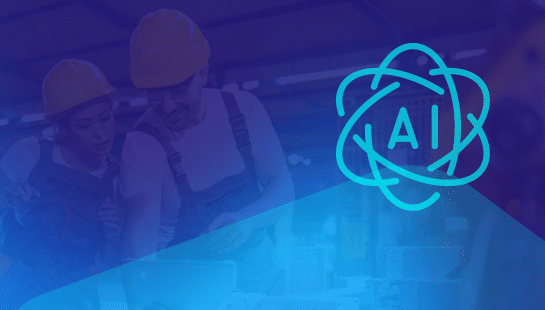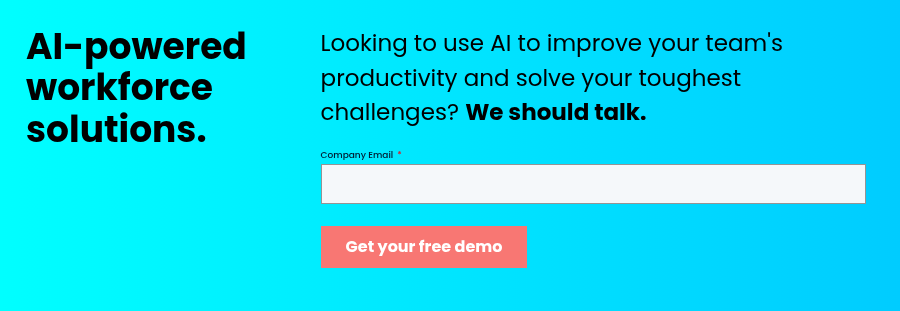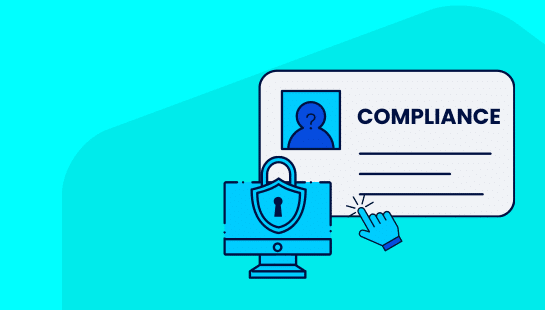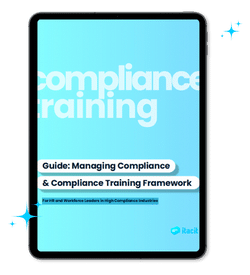Generative AI for employee training has revolutionized workplace learning. HR leaders need fresh ways to keep their teams skilled and involved. Generative AI brings groundbreaking solutions to employee training. It streamlines content creation and customizes learning experiences. The technology creates training materials faster – from eLearning modules to compliance courses – and cuts down production time. Human skills become more valuable as gen AI training systems evolve. Traditional frameworks turn into informed experiences that speed up learning curves and help people remember information better.
This piece shows you practical ways to set up employee training with generative AI in your organization. You’ll learn about building company-wide AI literacy, creating effective curriculums, and setting ethical usage policies. Your workforce will be ready for tomorrow’s challenges, where knowing how to work with AI systems will matter more than ever.
The Urgency for AI-Driven Training in Today’s Workforce
The workplace landscape changes faster than ever as generative AI reshapes jobs in every industry. Companies aren’t just thinking about AI, they’re rushing to embrace it. A striking 72% of executives see AI as their business priority. The problem? Most employees don’t have the skills to keep up with this transformation.
The GenAI skills gap in numbers
Numbers paint a clear picture of how unprepared organizations are for the AI revolution. Only 20% of workers know how to use AI tools in their jobs. This creates a huge skills gap as these technologies become common in workplaces. This gap shows a basic mismatch between business goals and their team’s readiness.
The challenge becomes clearer with adoption rates. About 35% of organizations use generative AI now, and another 42% plan to implement it soon. Yet 70% of employees say they haven’t received any training on using AI tools.
HR leaders face both challenges and opportunities. These numbers tell the story:
- 83% of workers want more skills training from employers
- 97% of executives say their teams need AI training or retraining
- 69% of companies can’t find people with the right AI skills
Time matters more than ever. Organizations that don’t close this skills gap will fall behind as GenAI tools become standard.
Why traditional training is no longer enough
Old-school training methods don’t prepare employees for today’s AI-powered workplace. Generic courses and static materials can’t match AI’s quick progress. AI tools might change completely by the time traditional training materials get approved and launched.
Traditional approaches miss the mark in three ways:
They focus too much on theory instead of real practice. Teams need hands-on experience with AI tools that relate to their actual jobs.
Standard training doesn’t adjust to each person’s learning pace and style. Some people pick up AI concepts quickly while others need more time, regular training can’t flex to meet these needs.
Regular learning systems weren’t built to work with AI tools. It seems odd to teach AI skills on platforms that don’t even use AI.
Today’s employees need flexible, customized training they can use right away. Modern learning management system offers AI-powered training that adapts to individual styles while teaching job-specific skills.
The risks run high. Companies that bridge the AI skills gap gain big advantages. Teams who know how to use AI show 40% higher productivity than others. Smart organizations see AI training as essential, not optional.
The takeaway seems obvious: Old training methods won’t solve new skills challenges. Competitive companies need training systems built for the AI age, systems that adapt and think ahead just like the tech they teach.
Building AI Literacy Across the Organization
AI-literate workforce development forms the foundation of successful generative AI implementation. Research shows that AI literacy is the biggest factor in how employees feel about AI – whether they’re hopeful or fearful about its effect on their work. This knowledge gap shapes your organization’s AI success story.
Company-wide fluency training
AI fluency extends beyond simple familiarity with technology. Your workforce should confidently identify opportunities to use AI, cooperate with AI systems, and make informed decisions about AI solution applications. Only 31% of employees currently feel confident using AI tools, which points to a significant skills vacuum that needs attention.
AI literacy programs should address three vital dimensions:
- Foundational knowledge – Understanding how AI works, its capabilities, and limitations
- Practical application – Learning how to use AI effectively in specific job contexts
- Ethical framework – Recognizing responsible usage guidelines and potential concerns
Different roles need different levels of AI fluency. Marketing managers need AI skills to generate content, while financial analysts focus on data analysis applications. Role-specific customization makes training relevant and applicable right away.
Amy Mosher, chief people officer at isolved, states “AI fluency doesn’t mean every employee needs to become a data scientist. It means workers know how AI fits into their role, how it can improve their work, and how to use it responsibly”.
Structured feedback tools help map your organization’s current AI literacy landscape. This baseline assessment reveals understood concepts and areas needing clarification. Learning paths should combine essential AI principles with practical applications specific to each department.
Reducing fear and resistance to GenAI
AI adoption’s human element demands attention. Research indicates 37% of employees fear they’ll lose their jobs to AI, creating a major barrier to implementation. Direct communication about these concerns matters.
AI should be presented as a tool that improves rather than replaces human potential. Clear communication helps employees understand that AI handles routine tasks while elevating their strategic contributions. People typically show less resistance when they see AI as a complement to their work.
Early involvement of potential skeptics proves valuable during AI implementation. These critical voices often uncover challenges that early adopters might miss, which leads to better deployment approaches. Resistance can drive innovation by pushing teams to think critically about limitations and risks.
Teams need psychological safety to experiment with AI. Employees should explore AI tools without pressure, perhaps drafting emails or searching for travel options. Small victories build confidence gradually and turn skeptics into promoters.
IBM tackled resistance by expanding accountability beyond the executive team. They created a governance framework using ethics principles to guide AI project owners and placed AI ethics representatives in business units. This formal structure increased employee trust significantly.
Learning management systems speed up this process through structured, role-specific AI training. Their platform helps organizations create practical, hands-on learning experiences that build AI usage confidence while addressing common concerns.
Note that employees with higher AI literacy are more likely to expect positive outcomes from AI and nowhere near as likely to feel fear or apprehension. Investment in complete AI literacy programs creates an adaptable, future-ready workforce that thrives in the AI era.
Designing Tiered Learning Strategies with GenAI
Your workforce needs different types of generative AI training. Smart organizations know their employees use AI in different ways, and this calls for well-planned learning approaches. Studies show 80 percent of U.S. workers could see AI affect at least 10 percent of their work activities. This effect varies a lot based on roles and departments.
Segmenting training by job roles
Creating good gen AI employee training starts with learning how AI will affect specific roles. Recent analysis shows AI job titles lack standard names, and many positions share similar duties under different titles. This makes role-based grouping even more vital.
A successful tiered approach splits training into different levels that line up with how employees use AI at work:
- Foundational tier: Simple AI concepts and basic applications for all employees
- Intermediate tier: Applied knowledge and workflow integration for regular users
- Advanced tier: Complex implementation and strategic application for specialists
Research proves tiered AI learning cuts knowledge gaps by 35% and makes progress 2x faster compared to generic approaches. Employees learn faster because they get exactly what they need without extra content.
Each department’s AI exposure needs careful analysis. To cite an instance, customer service roles face big changes, with 84% of McKinsey’s forecasted 12 million occupational shifts expected in customer-facing positions. STEM and technical professionals need different preparation that focuses on implementation rather than usage.
A three-level strategy works well for many organizations:
- Awareness level for general staff: Broad concepts and simple applications
- Practitioner level for regular users: Role-specific tools and workflow integration
- Expert level for champions: Advanced implementation and strategic guidance
Customizing content for technical vs. non-technical staff
The biggest difference in your generative AI employee training strategy should focus on technical and non-technical staff. These groups work with AI technology in completely different ways.
Technical teams need training focused on:
- Development and implementation: Building, supporting, and managing AI systems
- Risk management: Spotting and fixing potential issues with AI deployments
- Integration strategies: Connecting AI tools with existing technical infrastructure
Technical staff must learn more about how AI works inside. Their training should cover data quality, privacy, security, and AI governance frameworks. They also need updates about new tools and architectures as the field changes fast.
Non-technical staff need a different training approach:
- Practical application: Using AI tools to make existing workflows better
- Prompt engineering: Creating good inputs that generate useful outputs
- Output evaluation: Checking and improving AI-generated content
Simple definitions of generative AI work best for non-technical staff, without technical jargon. Visual aids and real-life examples help them understand daily tasks better. They need hands-on practice with AI tools in safe environments.
Research shows technical skills matter (about 27% of in-demand skills), but most vital skills for the AI era are non-technical. Basic skills like mathematics and active learning, people skills like negotiation, and thinking skills like critical thinking make up nearly 58% of skills needed in growing AI-adjacent jobs.
Both groups need different things. Technical teams must learn to deploy and manage AI systems well, while non-technical staff should learn to work together with these tools to boost their productivity. Companies that balance these approaches see productivity gains 40% higher than those using simple training.
Your generative AI employee training strategy should match your organization’s AI goals. Tiered learning approaches let you adapt as tools and capabilities grow without starting over.
Creating Effective AI-First Training Curriculums
Creating effective AI-first training curriculums needs more than simple digital literacy. Organizations must connect technology to real workplace needs. The rising AI adoption hasn’t translated into expected returns, which shows how difficult it is to get results.
Incorporating prompt engineering and AI tools
Prompt engineering, the art of crafting effective inputs for AI systems, has emerged as an essential skill for today’s workforce. This skill helps employees communicate better with AI models and get more accurate, relevant responses.
Prompt engineering differs from traditional technical skills. It blends linguistic ability with creative expression to maximize the potential of generative AI tools. Teaching your team these techniques boosts productivity right away:
- Chain-of-thought prompting: Breaking complex questions into logical steps
- Generated knowledge prompting: First asking the AI to produce relevant facts before completing tasks
- Self-refine prompting: Solving problems iteratively with AI critique at each stage
The training should emphasize practical applications rather than theory. Job sites list thousands of prompt engineer positions in the US, with salaries ranging from $50,000 to over $150,000 per year. This surge in job market proves why these skills add value across departments.
The rhetorical approach, C.R.E.A.T.E. method, and structured prompting are three popular frameworks to teach prompt engineering. Each framework benefits different learning styles. Success lies in picking methods that fit your team’s needs instead of using a one-size-fits-all approach.
Lining up training with business goals
Many organizations make a crucial mistake – they start with technology instead of business needs. Yes, it is true that 72% of executives see AI as a business priority, but many fail to link their training to specific business objectives.
A successful AI training curriculum starts with a simple question: “What problem are we trying to solve?” The best approaches find specific areas where AI can increase productivity by cutting manual work and enhancing worker capabilities.
Here’s how to line up AI training with business goals:
Start by breaking down big goals into manageable pieces. If better customer loyalty is your goal, target specific metrics like cutting churn by 10% or boosting repeat purchases by 5%.
Look at your current capabilities next. Check if you have the right data, people, and strong infrastructure to support these goals. This honest assessment shapes training priorities.
Calculate each initiative’s potential impact before investing in curriculum development. Not all AI skills provide equal business value, focus on areas that offer high impact and feasibility first.
This business-first mindset turns standard AI training into a competitive edge. To cite an instance, see how EY developed specific AI badges that line up with business roles. This helps employees understand what they need to learn and why it matters for company goals.
Technology without purpose rarely delivers value. Creating curriculums that balance technical skills with strategic application transforms generative AI from an interesting technology into a powerful business tool.
Leveraging GenAI for Frontline and Deskless Workers
Frontline workers drive the global economy, yet they don’t get enough support when it comes to generative AI for employee training. These workers, retail associates, healthcare providers, manufacturing teams, and service staff, can’t bridge the digital divide that holds them back in an AI-powered workplace.
Why this group is often overlooked
The numbers tell a compelling story. From roughly 3.32 billion workers worldwide, 81% have frontline roles. These vital workers rarely get equal treatment in employee development programs.
Tech budgets reveal a stark reality, only 1% of tech spending supports frontline workers. The training numbers look bleak too. Just 29% of companies deliver e-learning to frontline staff, even though these workers keep asking for more learning opportunities.
What’s at stake? 35% of frontline workers say lack of training makes their jobs harder. Traditional classroom training doesn’t work for frontline staff because of:
- Unpredictable schedules and shift work
- No desk or computer time
- Different learning styles and reading levels
- Teams spread across many locations
Most companies’ digital transformation efforts focus on office workers. One expert puts it simply: “Tech has failed the frontline”. This gap becomes a bigger problem as AI changes job requirements in every sector.
Making training available and relevant
AI offers solutions to close this gap. AI-powered training platforms can change how deskless workers learn by tackling their unique challenges.
AI removes language barriers, a huge win for diverse teams. Companies use AI to translate training content into hundreds of languages at low cost. This helps immigrant workers and multilingual teams succeed.
The technology adapts to each person’s needs. Algorithms track achievements and engagement to find learning patterns. This individual-specific approach helps frontline staff learn job skills in ways that work best for them.
Microlearning plays a key role. AI delivers small learning modules workers can finish during short breaks. This format fits perfectly with irregular schedules or quick breaks between shifts.
Ground applications show great results. AI tools help hotel housekeeping staff check room cleanliness with quick learning times, about 4 minutes to master the application. One housekeeper’s reaction says it all: “Does this mean I’m not gonna get yelled at anymore?”. This shows how AI reduces stress and makes jobs better.
Chatbot virtual assistants provide another solution. These tools work around the clock, even in remote places. Frontline workers get instant help without waiting for supervisors.
NASWA and Microsoft Philanthropies worked together to create the “Generative AI Guide for Career Coaches” for frontline staff. This specialized content meets customer-facing workers’ unique needs.
Modern learning management system takes things further with mobile-first design and AI that adapts to users. Their platform delivers training to workers’ personal devices. This removes the need for a desk while creating personalized learning experiences.
Frontline workers need generative AI training now. Their jobs face big changes, but with the right training support, they can succeed in an AI-enhanced workplace instead of feeling left behind.
Best Practices for Safe and Ethical GenAI Use
Organizations are racing to adopt AI tools while security risks take a back seat to productivity gains. A startling fact reveals that 38% of employees share sensitive work information with AI tools without employer permission. This casual use of generative AI in employee training creates major security gaps that need immediate attention.
Avoiding data leaks and misinformation
The GenAI landscape multiplies data security threats faster. AI tools regularly send information to external servers, keep conversation histories, and use inputs to train their models. Employees paste confidential data into AI systems without understanding the potential risks.
Data exposure isn’t the only concern. AI models can hallucinate and generate convincing but completely fabricated information. Training scenarios can lead to:
- Wrong procedures or protocols spreading
- Plausible but inaccurate compliance guidance appearing
- Misleading statistics or case studies emerging
Protection requires multiple layers. Natural language processing tools should identify potentially misleading content. Network analysis procedures need to track information flow through organizational AI systems. Forensic capabilities must break down potential incidents through metadata analysis and AI-detection tools.
Establishing internal GenAI usage policies
A complete GenAI usage policy is the life-blood of safe implementation. Organizations should clearly define which AI tools they approve, ChatGPT, Claude, Gemini, or others, and their appropriate contexts.
Effective policies must address these critical components:
- Data handling protocols: Rules about information sharing with AI systems
- Access tiers: Roles that can use specific AI tools and their circumstances
- Verification procedures: Review requirements for AI-assisted work
- Incident response: Clear procedures to track AI usage and identify misuse
Strong policies need to balance protection with practicality. Banning all AI tools can backfire because employees might use personal devices for their AI needs, increasing risk instead of reducing it.
Flexible frameworks should adapt as technology evolves. Regular reviews and updates help keep pace with emerging AI capabilities and regulations. Training modules ensure all employees understand the policy and their responsibilities.
Policies work best when they enable rather than restrict. One expert notes, “The most effective policies provide practical guidance that enables employees to make use of AI capabilities while maintaining organizational standards”.
Choosing the Right Tools and Partners
The right GenAI tools and training partners can make or break your AI adoption success. Organizations with strong learning cultures backed by the right tools see 57% higher employee retention and 23% more internal mobility.
Evaluating external vs. internal content
Organizations must weigh crucial tradeoffs between developing AI training materials in-house or buying external solutions. Teams create internal training to optimize operations, ensure compliance, and develop staff. External training helps boost customer success, retention, and revenue.
Here’s what you should think about when making this choice:
- Original investment: Building AI in-house costs 3-5 times more than external solutions
- Development timeline: Internal AI projects need 6-12 months to reach production. External solutions take days or weeks
- Customization needs: You must decide if 90-95% solution accuracy from external partners is enough or if you need complete arrangement with your processes
- Data privacy concerns: Make sure external vendors have no-use clauses that stop your data from training their models
Smart teams identify core product or service information that works for both internal and external audiences. This shared content forms the foundations of quick content development.
“Adapting existing content can be faster and more efficient than creating content from scratch,” notes a learning expert. “With product training, everyone needs to know how to use important features. With a careful approach, you can repurpose large content segments for training both new employees and onboarding new customers”.
How iTacit’s LMS supports GenAI-powered training
An AI-powered learning management system (LMS) works as the core of effective generative AI employee training. iTacit’s employee training platform brings several benefits for GenAI implementation:
The system pulls information straight from your internal documents, policies, and employee handbooks. With AI HR Assistant, your team gets company-specific AI responses instead of generic information. Employees receive accurate, policy-aligned answers when they ask about compliance requirements or internal processes.
The platform cuts content creation time significantly. Teams using AI-powered training platforms report a 70% reduction in content creation time. L&D teams can focus on strategy rather than routine tasks.
A good AI-powered LMS should include video-first design, training customization options, built-in assessments, live reporting, and hybrid delivery capabilities. These features help your generative AI training initiatives succeed.
Future-Proofing Your Workforce with GenAI
The future workplace demands more than just immediate training – organizations must understand emerging AI trends that will transform how we work. Technical skills now become obsolete nowhere near five years on average. Smart organizations are learning innovative ways to keep their workforce ahead of the curve.
Trends in AI-powered micro-credentials
The AI era has made micro-credentials increasingly popular. These mini-qualifications show specific competencies and give professionals quick, relevant upskilling options that match today’s faster-evolving workplace needs.
AI personalization sets modern micro-credentials apart. These systems utilize extensive datasets of learner behavior, priorities, and performance to create educational pathways that match individual needs. Learning becomes more engaging and effective through this individual-specific approach.
Skills gaps and emerging industry trends become clear through AI, which helps micro-credential programs stay current with market demands. Employees stay competitive amid constant change through this live adaptation. AI-driven micro-credentialing programs demonstrate this effect – they’ve helped reskill their workforce in critical areas like cybersecurity, which boosted performance and led to higher employee satisfaction and retention.
The rise of virtual coaches and AI mentors
AI virtual coaches represent another powerful development in employee growth. These systems offer individual-specific guidance, feedback, and learning resources that mirror ground mentorship experiences.
Companies see great results with AI mentors. A tech company cut onboarding time by 30% using personalized training modules. A global retail business saw sales performance jump 25% after adding an AI mentor solution.
The future will likely blend AI and human coaching. AI will handle data-heavy, routine tasks while human coaches provide emotional insight and strategic guidance. To cite an instance, see how AI might spot skill gaps and suggest courses, then a human coach helps arrange this plan with long-term career goals.
Conclusion
Generative AI has changed how organizations handle employee training and development. AI literacy gives companies a competitive edge in today’s market. Numbers tell the story, 83% of workers want more skills training but only 20% feel ready to use AI tools.
Your AI implementation success depends on smart, strategic planning. Building company-wide AI literacy reduces fear and resistance. The next step creates tiered learning strategies that match the needs of both technical and non-technical staff. Your frontline workers can benefit from AI-powered training tailored to their work environment.
Ethics must come first. Clear usage policies and data protection practices prevent AI initiatives from causing problems. Setting proper guidelines should happen while developing skills.
AI-powered micro-credentials and virtual coaches will shape workforce development’s future. These breakthroughs help employees keep up as technical skills become outdated faster than before.
It’s worth mentioning that AI adoption boosts human skills rather than replacing them. AI takes care of routine tasks while team members focus on creative problem-solving and strategic thinking. This leads to improved productivity, better retention, and happier employees.
Building an AI-fluent organization needs dedication and time. The companies that start now will lead tomorrow. Investing in generative AI for employee training goes beyond new technology, it creates a workforce ready for an ever-changing future.










